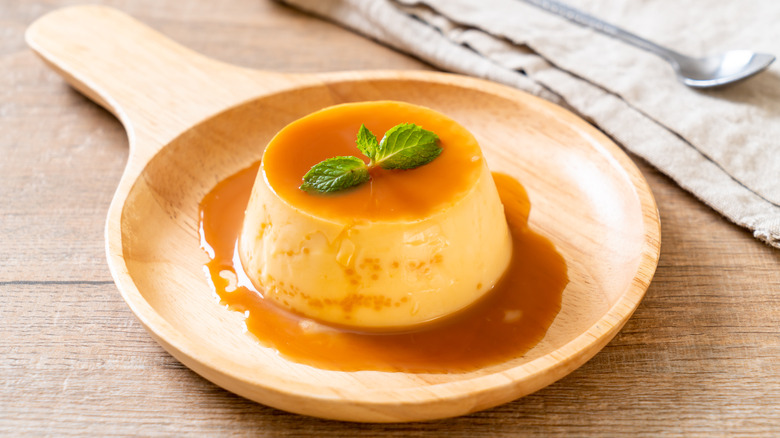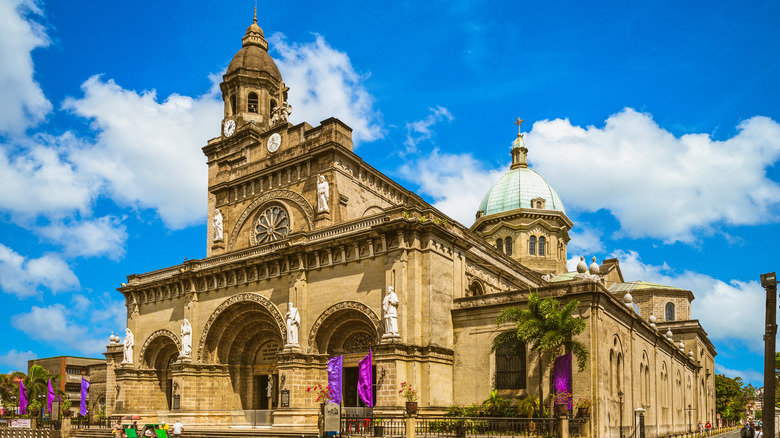How Construction May Have Inspired Some Of The Philippines' Classic Desserts
While we know egg whites can be the building blocks for sweet and savory treats from omelets to macarons, angel food cakes, and meringues, there was a time in history when they were actually used with real building blocks — as in the construction of stone churches.
The practice of using egg whites in edifice construction goes back several hundred years to the Philippines, where grand Baroque churches were being built by Spanish priests and friars anxious to awe the local population into joining the, then-historically-adolescent Catholic church. Historian Pia Lim Castillo writes in Eggs in Cookery, that local bricks had to be protected with a layer of a plaster finish known as a "palitada" because, without that, there was no way it could survive the elements. Palitada, which was enriched with materials we'd hardly describe as construction material today, included egg whites, molasses, and the leaves of unspecified plants that were cut up and soaked. Castillo says some areas even used milk taken from the carabao or water buffalo, the blood of goats, and tree sap to glaze the stones. The dome of the famed Manila Cathedral is said to be made with duck egg, lime, powdered brick, and bamboo sap.
Castillo adds that the Philippines wasn't the only country to use egg whites to build churches, as one seventh century church in India had done exactly the same.
Discarded egg yolks eventually made their way into pastry
Different churches used different eggs to make this special mortar, also called "argamasa." In her paper, Castillo cites records showing duck eggs were widely used to build a church in Cavite, southwest of Manila, per Eggs in Cookery. Atlas Obscura cites another historian who says eggs from other poultry, including chickens, were added to lime, sand, water, and some other ingredients to make this weatherproof mortar.
So what happened to all the egg yolks? Castillo posits that the women got tired of seeing all the golden yellow goodness being wasted by being dumped and decided to turn these into many of the egg yolk-based treats Filipinos enjoy today. She writes that early versions of breads like enseimada were once made with egg yolks and lard, as was the torta, which uses these ingredients plus coconut wine or tuba. Leche flan, which looks like a crème caramel, is made out of egg yolk, per Panlasang Pinoy, as is yema, a popular Filipino candy. Then there is the (also Catholic) San Nicholas cookie, which is also made with egg yolks, says Atlas Obscura.
And while the practice of using egg whites in mortar ended in the 19th century, egg yolks are still widely used in the making of these delicious Filipino desserts today.

